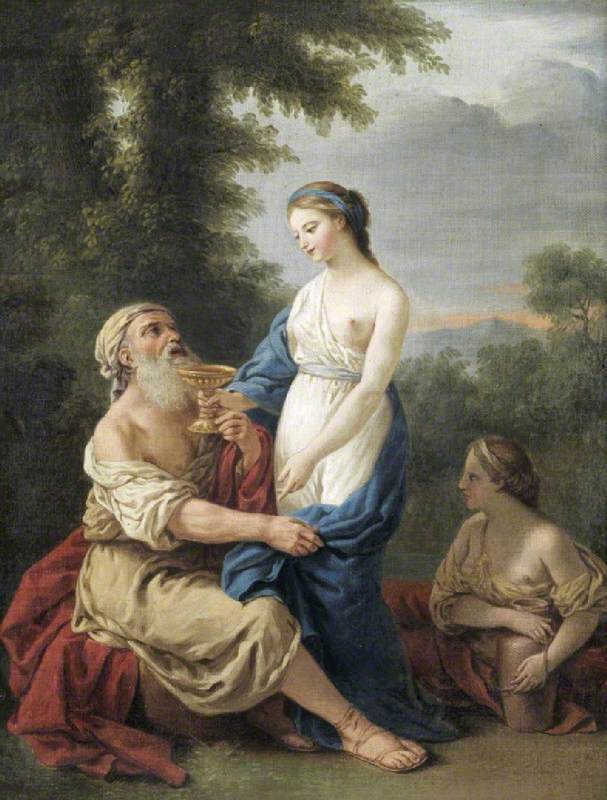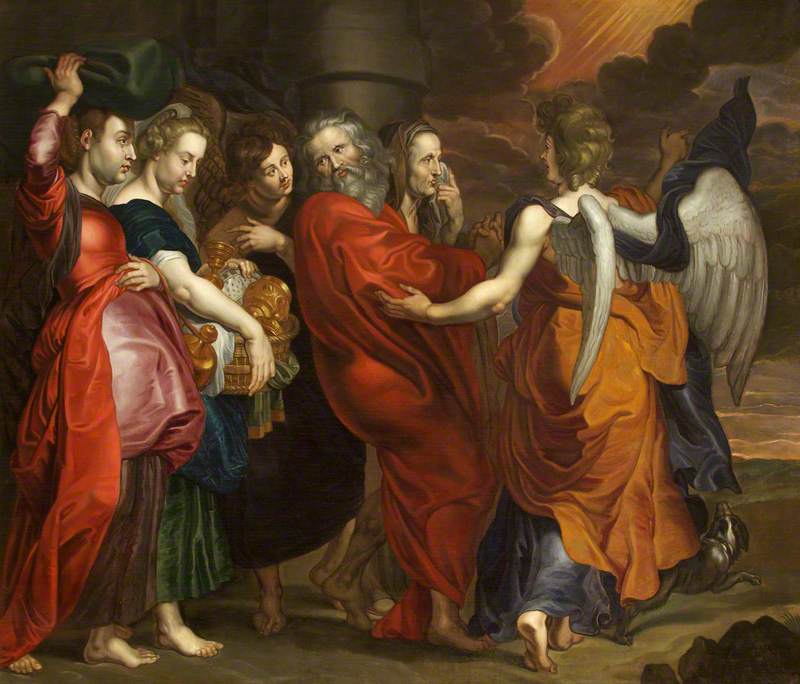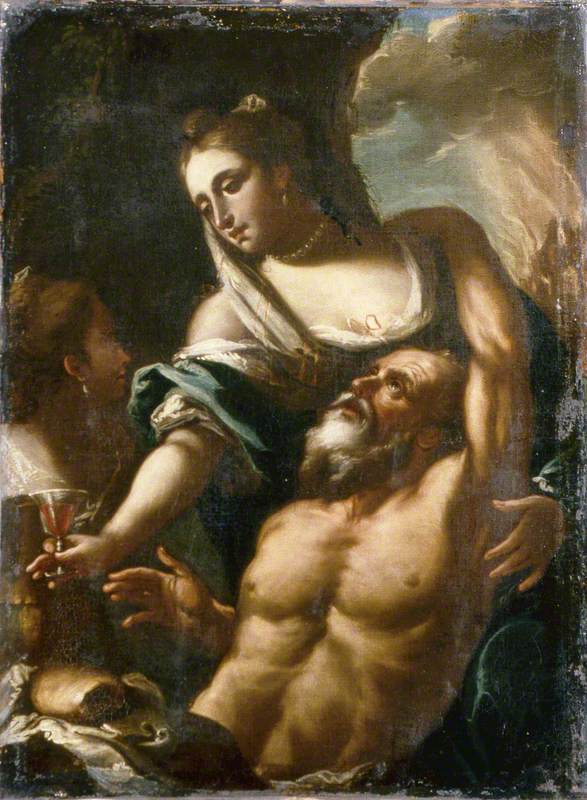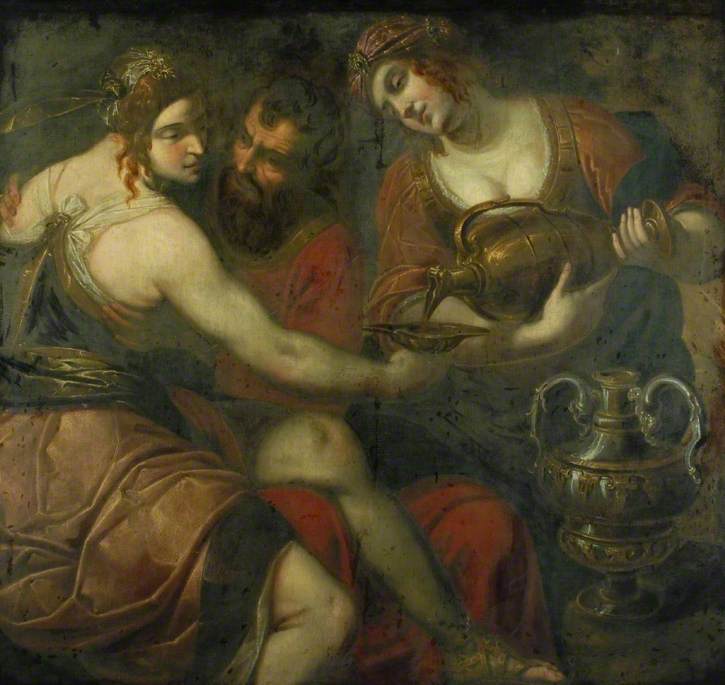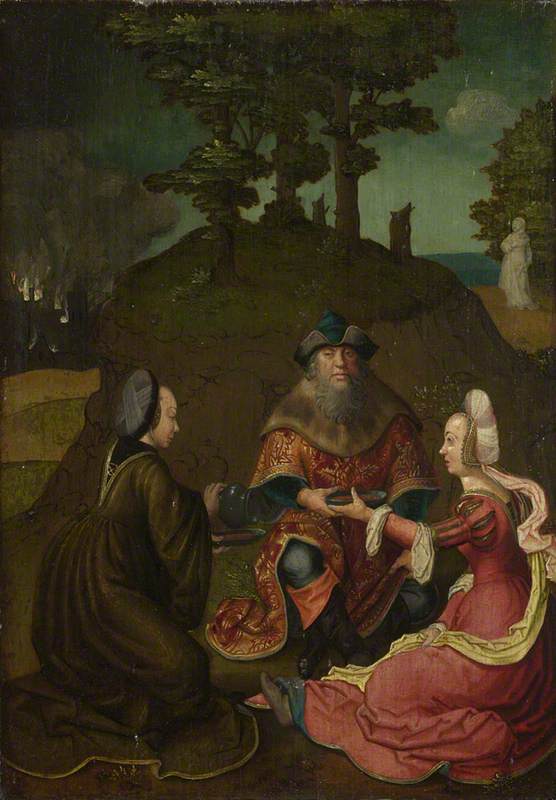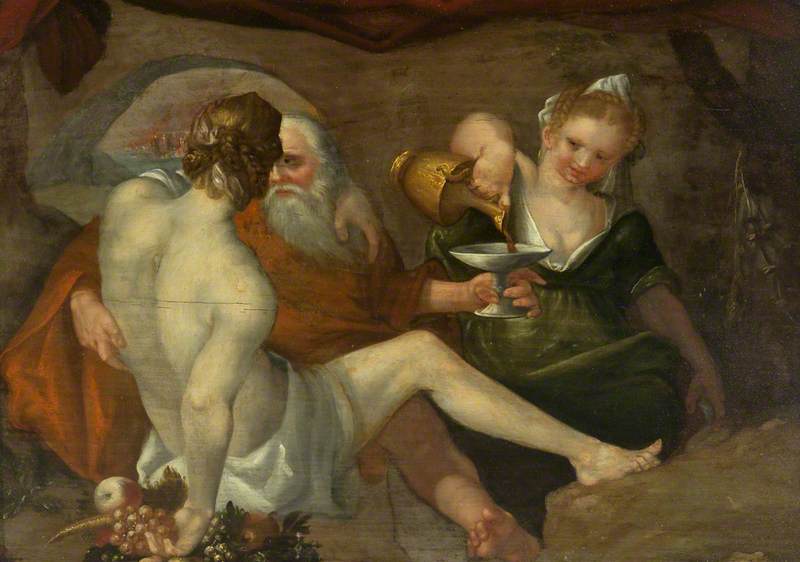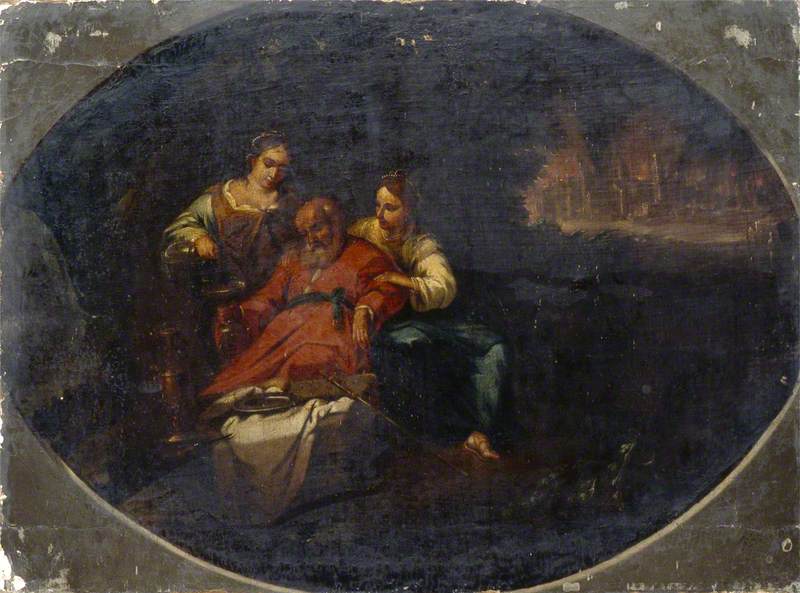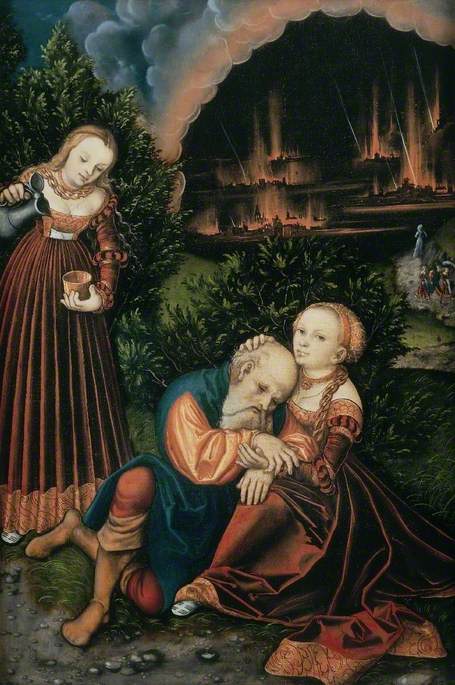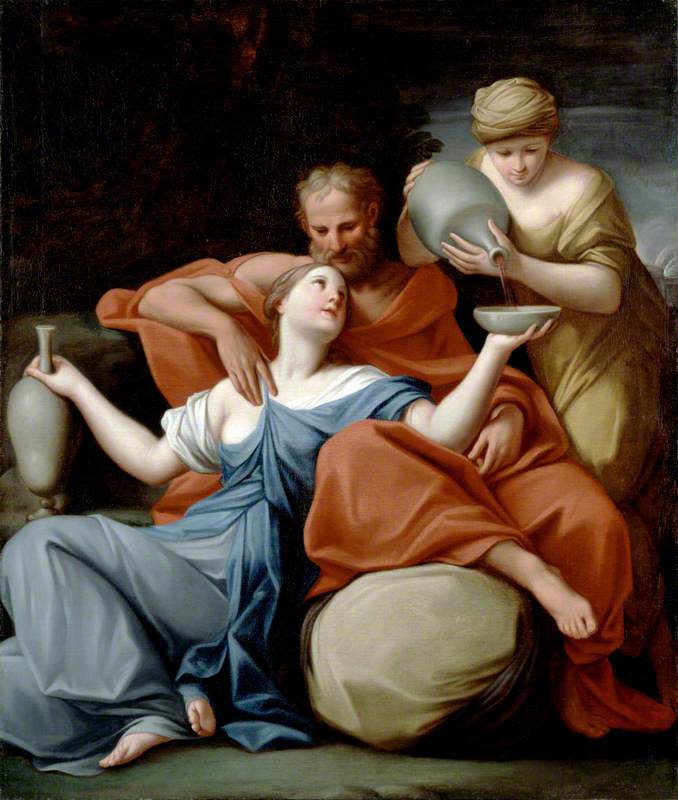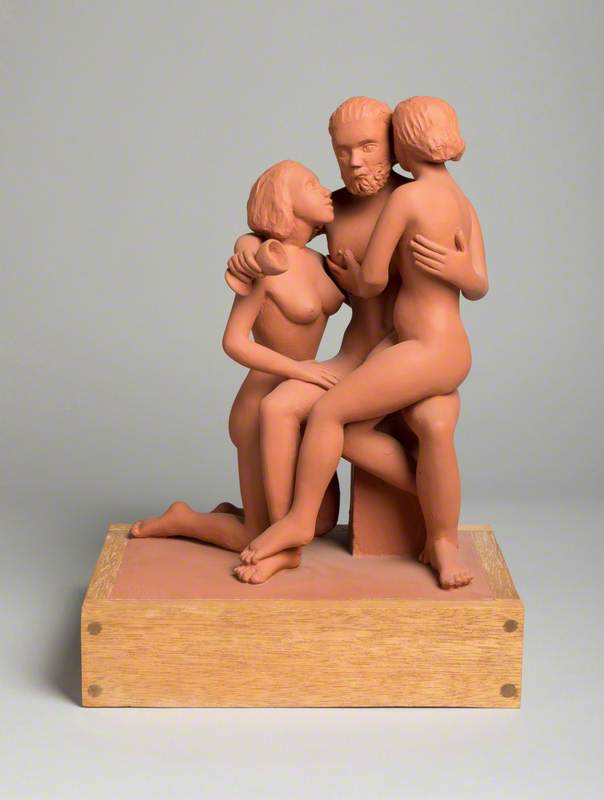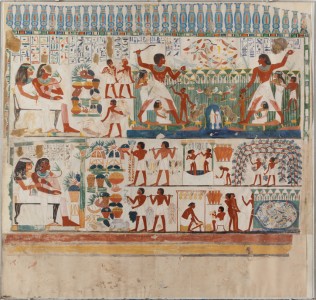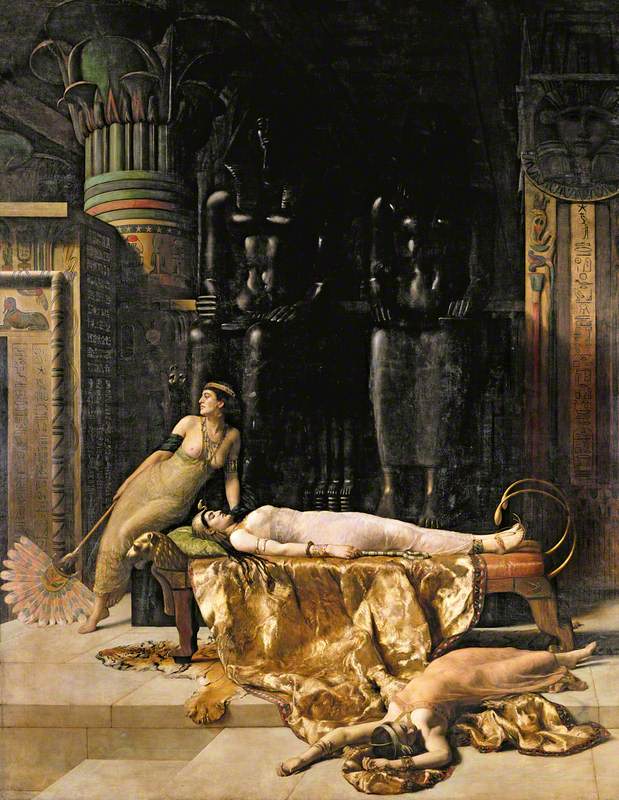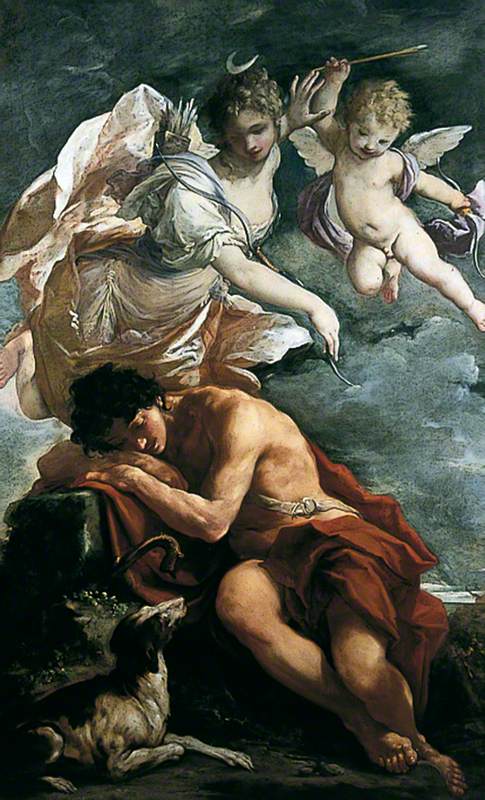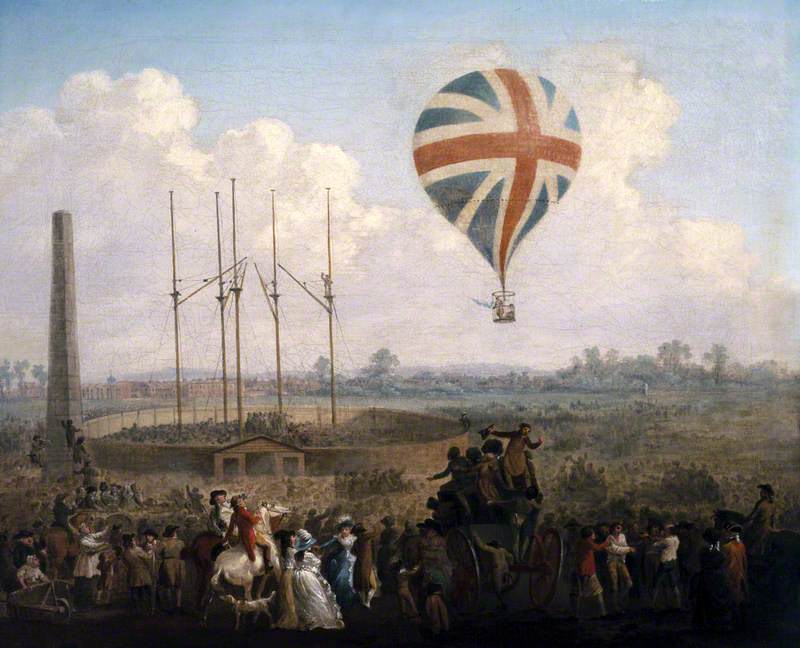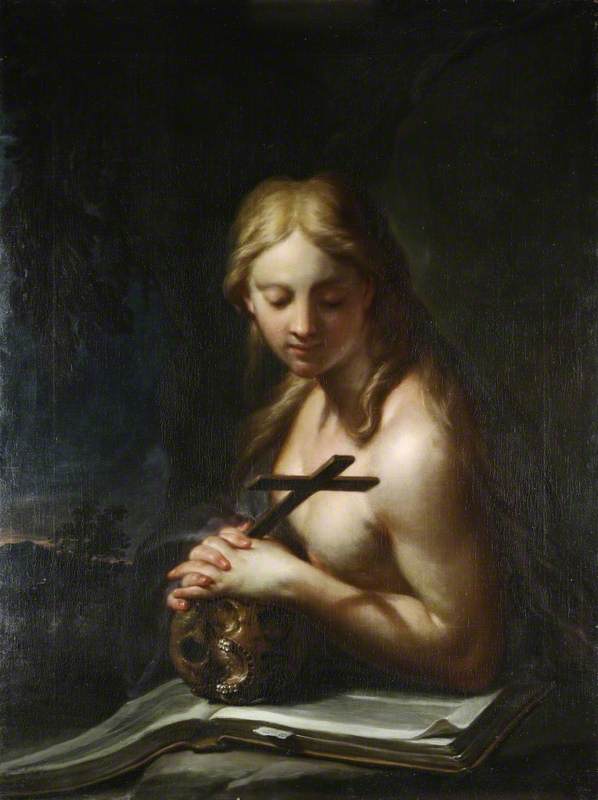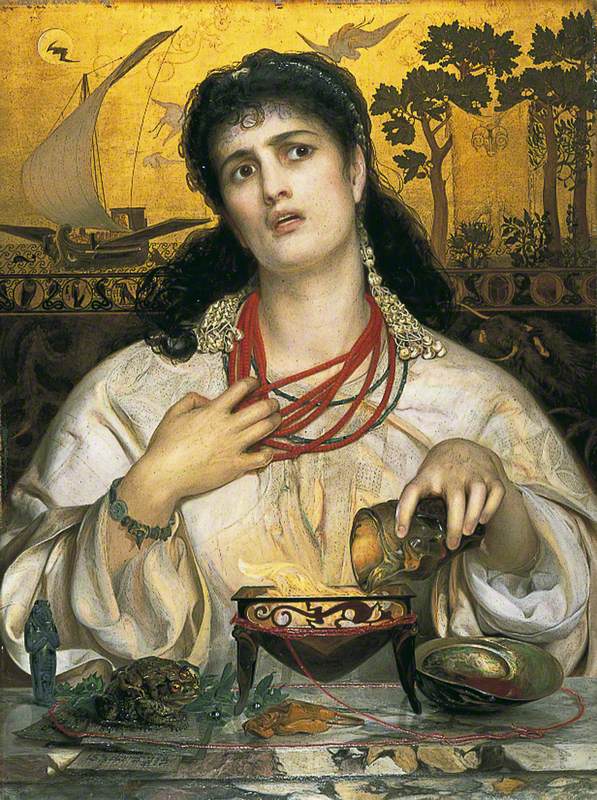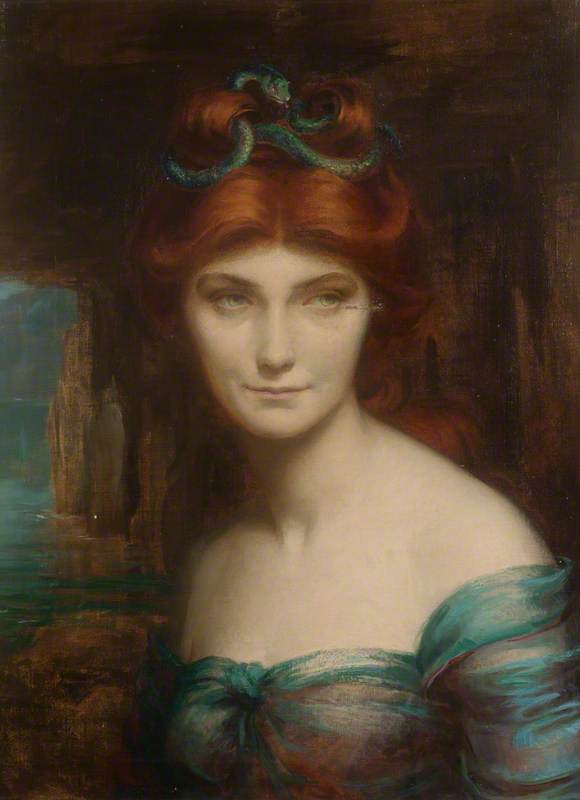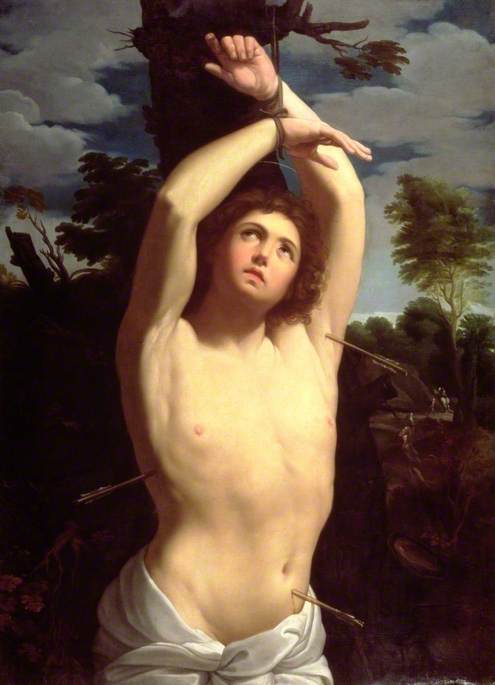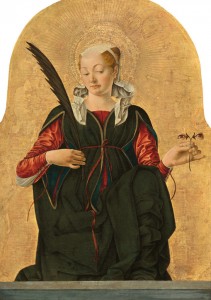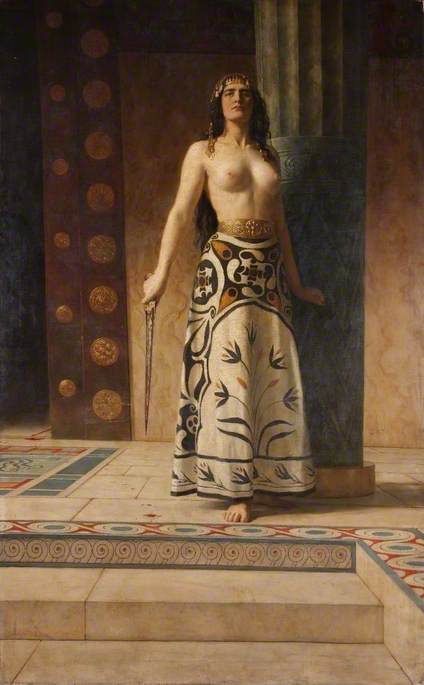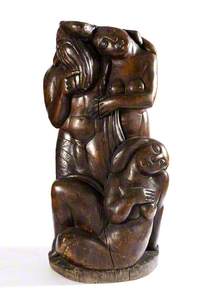The Old Testament is filled with dramatic and often unsettling stories, but few are more shocking and morally charged as that of Lot and his daughters.
The story is recounted in Genesis 19: 1–38. Lot, his wife and two daughters were visited by two angels who urged them to flee the city of Sodom before its imminent destruction by God. As they fled, Lot's wife disobeyed the angels' command to not look back and was turned into a pillar of salt.
Lot and his daughters took refuge inside a cave near the mountain town of Zoar. Believing that there were no men left alive, the two chaste daughters conspired to get their father drunk with wine and each conceive a child by him in order to continue the family line. The incestuous relations resulted in the birth of Moab and Ben-Ammi, founders of the Moabites and Ammonites.
The obvious question is why have artists over the centuries been drawn to this grim and disturbing episode? As a cautionary tale on the dangers of lust and alcohol, the biblical narrative held obvious appeal to artists in past centuries, but it also raised more profoundly complex questions about duty, sacrifice, free will and circumstance. The story has long been open to various interpretations, many of which are reflected in art.
An early example of the subject in Western painting can be found by Lucas Cranach the elder, now in the collection of Compton Verney, Warwickshire.
Cranach combined the key moments of the episode to create a highly descriptive visual narrative. Tellingly, Cranach used most of the composition to depict the duplicitous behaviour of Lot's daughters. While one daughter pours the wine, the other caresses Lot's head and draws him closer to her, thus blurring the line between affection and deceit.
In Cranach's time, the story was widely considered by many as a warning about the cunning of women. In this respect, the painting relates to the broader themes known as Weibermacht and Weiberlisten (power of women, wiles of women) that were popular in the decorative arts and literature of the late medieval period.
The seventeenth century saw the story of Lot and his daughters reach the peak of its popularity, most notably in Italy where highly moralising stories were commissioned by public institutions and private citizens. Unlike earlier artists, Baroque painters became more selective on which part of the narrative to depict. Guido Reni, for example, focused on Lot and his daughters fleeing Sodom.
Lot and his Daughters leaving Sodom
about 1615-16
Guido Reni (1575–1642) 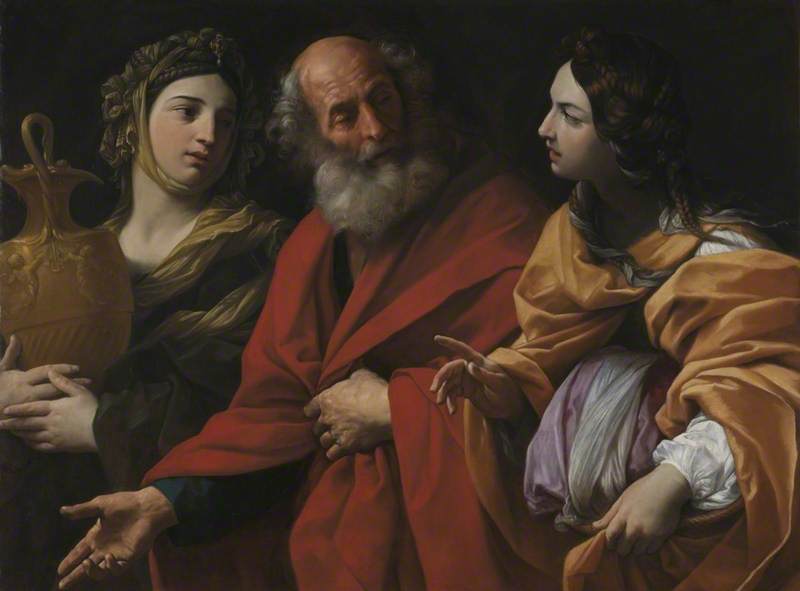
The trio are shown in conversation as they hurry to safety. Interestingly, Reni decided to depict Lot as a sober patriarch rather than a befuddled and bleary-eyed old man as favoured by other artists. Furthermore, there is no suggestion that the daughters are seductive temptresses. They are fully clothed and appear rational but apprehensive about what to do next. Reni reminds us that they are young women thrown into turmoil through no fault of their own.
In contrast to Reni's restrained picture, Giovanni Francesco Guerrieri could not resist illustrating the sensual eroticism that the story implied. He has depicted Lot's daughters dressed in low cut gowns and tight bodices, their upper bodies starkly illuminated by an oil lamp. Lot meanwhile is partially clothed and stares helplessly at the poured wine as if on the verge of drunken indignity. Cleverly, Guerrieri has used the newly fashionable chiaroscuro style to create a heightened sense of drama and convey the cave setting in which the narrative plays out.
What is perhaps most interesting about Guerrieri's canvas is the allusion that Lot's daughters are performing a necessary, albeit disturbing, duty to continue the lineage of their father, and therefore the human race. And while the theme of female trickery still looms large – notice the comforting but persuasive hand upon Lot's bare shoulder – the daughters are both focused intently on carrying out their plan with an emotionless efficiency.
Is the artist suggesting that all three are victims of circumstance rather than purposefully driven to commit sinful acts? It is also worth remembering that within the context of Old Testament morality, being childless was itself a social stigma to be avoided if possible. Whatever Guerrieri's intentions, his painting effectively captures both the moral dilemmas and ambiguities of the story.
The subject continued to be painted by artists throughout the seventeenth century, but often without the same degree of high drama found in previous artistic representations. Marcantonio Franceschini's version of the subject is imbued with an almost graceful classicism.
The relaxed poses, flowing robes and soft colours combine to lessen the emotional intensity of the scene. Yet there is one notable and disquieting aspect of the painting. Here, Lot appears to be a more active participant in the events and not the disengaged character usually seen. He looks down at his seated daughter while his right hand lingers worryingly over her upper body.
Lot's culpability in the story was often excused due to his inebriated state, but the notion that he was unaware of his actions is called into question in Franceschini's canvas. He also appears to be a much physically stronger and robust man than the usual portrayal of him as a weak, feeble figure.
The eighteenth and nineteenth centuries saw relatively few artistic depictions of the story. A rare example of the subject in Victorian art can be seen in Edward Burne-Jones' design for a stained glass window.
Lot and His Daughters
(cartoon for a stained glass window) 1874
Edward Burne-Jones (1833–1898) 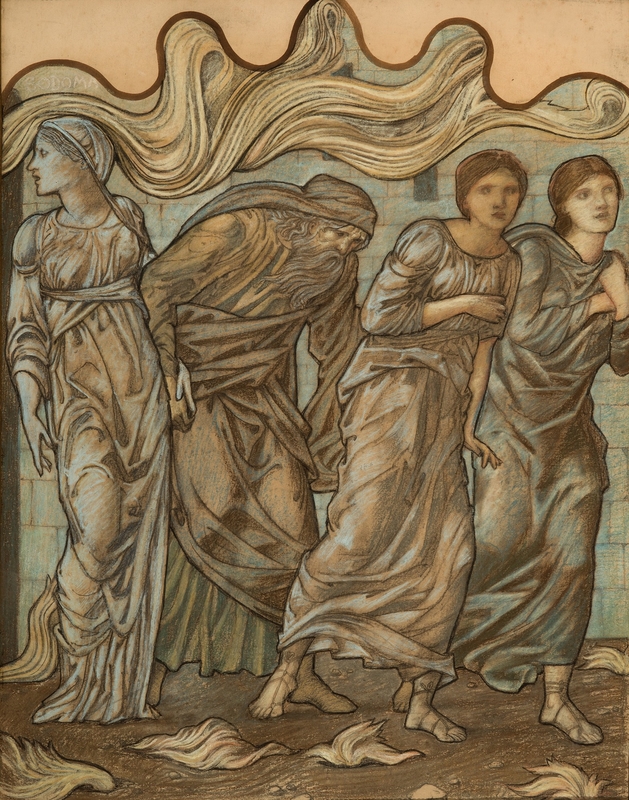
The divide between youth and old age seems to have been uppermost in the mind of Burne-Jones. Lot appears elderly and frail, hunched forward and struggling to keep pace with his daughters. Most striking, however, is the stylised treatment of the subject. Looming above the protagonists is a wide rhythmical mass of flame-like curves and swirls, suggesting the destruction of Sodom and Gomorrah and conveying a hurried sense of urgency.
One would not expect to find many examples of the Lot story in twentieth-century art, least of all in sculpture, and yet there are two highly distinctive artworks in three-dimensional form that are arguably more uncompromising and perturbing than any previous versions of the subject. The first is by the little-known Russian-Canadian sculptor Abraham (also known as Abrasha) Lozoff.
Combining the dual influences of Paul Gauguin and African tribal carvings, Lozoff depicted Lot and his daughters in sensuously elongated poses. The trio's entangled grouping not only conveys the physical acts that took place, but also the moral complexity of their interaction.
A similar approach is evident in a sculpture by Arthur William Henry Pears. The trio are completely nude and both daughters are in close physical contact with their father.
Their interlocking poses and gestures make for a deeply uncomfortable work, but one in which the physical and psychological aspects of the episode are expressed without compromise.
Even in our increasingly secular and liberal age, the biblical story of Lot and his daughters has lost little of its shock value and remains an undeniably troubling but compelling narrative.
The many visual depictions it has inspired are almost certain to draw a response from the viewer. With its interweaving themes of temptation, temperance, deception, selflessness and female empowerment, the story will no doubt continue to exert a timeless fascination.
Jonathan Hajdamach, independent art historian
Enjoyed this story? Get all the latest Art UK stories sent directly to your inbox when you sign up for our newsletter.
